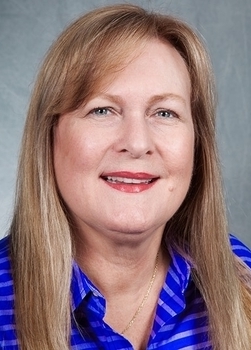David and I are fortunate to have excellent restaurants located near our home in south Florida. To us, an excellent restaurant is not a chain restaurant; rather, it is a local, family owned restaurant whose proprietors take as much pride in their food and libations as we take in owning and operating our business. An excellent restaurant, in David’s and my view, is not necessarily a fancy or expensive restaurant. In fact, our favorite local restaurant is Pompano Beach’s Fish Shack, where the owner personally selects the tomatoes for his customers’ salads, obtains his fish from his brother’s fishing boat, and cooks every meal to order. This post, however, is not about our favorite restaurants; instead, it is about the differences between the “front of the house” and the “back of the house” as it relates to both family owned and operated restaurants and Magnus, the business David and I co-own and operate. David and I had the pleasure of meeting a husband and wife team who own and operate a local restaurant, Swirl. When we arrived, there was a woman standing behind the bar who seemed slightly uncomfortable greeting us. We soon learned she is the co-owner and the chef, and she is far more comfortable in the kitchen or, as is commonly known in the restaurant business, the back of the house. She rarely interacts with the customers who patronize her restaurant for the great food she prepares, but on the evening David and I were there, her husband was running late from a catering event, leaving her to balance her time between being the chef and greeting her customers. When the chef’s husband arrived, the atmosphere changed. He, as the co-owner of the restaurant, is in charge of the front of the house, where his duties include being the curator of the excellent wine list, greeting customers, and in general, ensuring that everyone has a great dining experience. His personality is outgoing and friendly, while his wife is an introvert who appears more comfortable creating amazing food than engaging in small talk with customers. David and I can really relate to these business owners. Between the two of us, it is David who manages the “front of the house” for Magnus. David attends all networking events, business lunches, cocktail parties, holiday parties, etc. while I do just about anything else. David interacts with all clients and prospective clients regarding logistics, budgets, and more. David handles all of Magnus’ vendors, finances, etc., as well as almost all of my personal finances (particularly when doing so involves phone calls). Like the chef at Swirl, I handle the back of the house at Magnus. I am a self professed science nerd who loves nothing more than collecting, analyzing, and reporting research data obtained for our clients. My interactions with clients are vastly different from David’s and are most often within the confines of a courtroom or a research day. Everyone has their strengths; fortunately for David and me, we function as a team so that our “house” is greater than the sum of our individual parts.
Melissa’s comparison to front of house and back of house is interesting as we often struggle to figure out the division of labor. But, she’s right in that though I participate in day of research duties and report writing, that’s her bailiwick. She, like the chef, creates the “meat” of what we do as trial consultants. So, I guess I do run the front of house. In doing case intake, I am taking the customer’s orders. We discuss the special details of how their case should be handled. Our menu isn’t fixed, so the menu items have to be priced on a case by case, order by order, basis and, my favorite part, because it is a business that we run, is that in the end, I get to tally the check, and ensure we are paid. But, what also struck me in reading her post is that, in many operations with partnerships, the partners must be ready to do front of house or back of house to take over as she described. I can stir a pot here or there, chop some veggies, and grill some meat, but we have to know our place and our strengths. I’m not suggesting that the front of house person who may be the order taker sitting in an office can fill in for the other partner who climbs on the roof to check the refrigeration system. But, in many instances, it is good to be cross trained to some degree. I’m thinking of when we had satellite television installed at our then new house. The satellite “guy” called, set the appointment and showed up with another person in tow. Turned out it was husband and wife, and, guess what, she was the one with the tool belt and the know how. She was one of the best at this type of job I’ve ever seen. She sure didn’t fit the stereotype for that kind of work, but she did it well and apparently better than he did – he was obviously there to watch and learn, not to do. It is sometimes fun to play with such analogies as a mental exercise to help conceptualize the give and take, the yin and yang, of operating a small business. In the end, it is a team effort to get the job done!



Comments are closed.